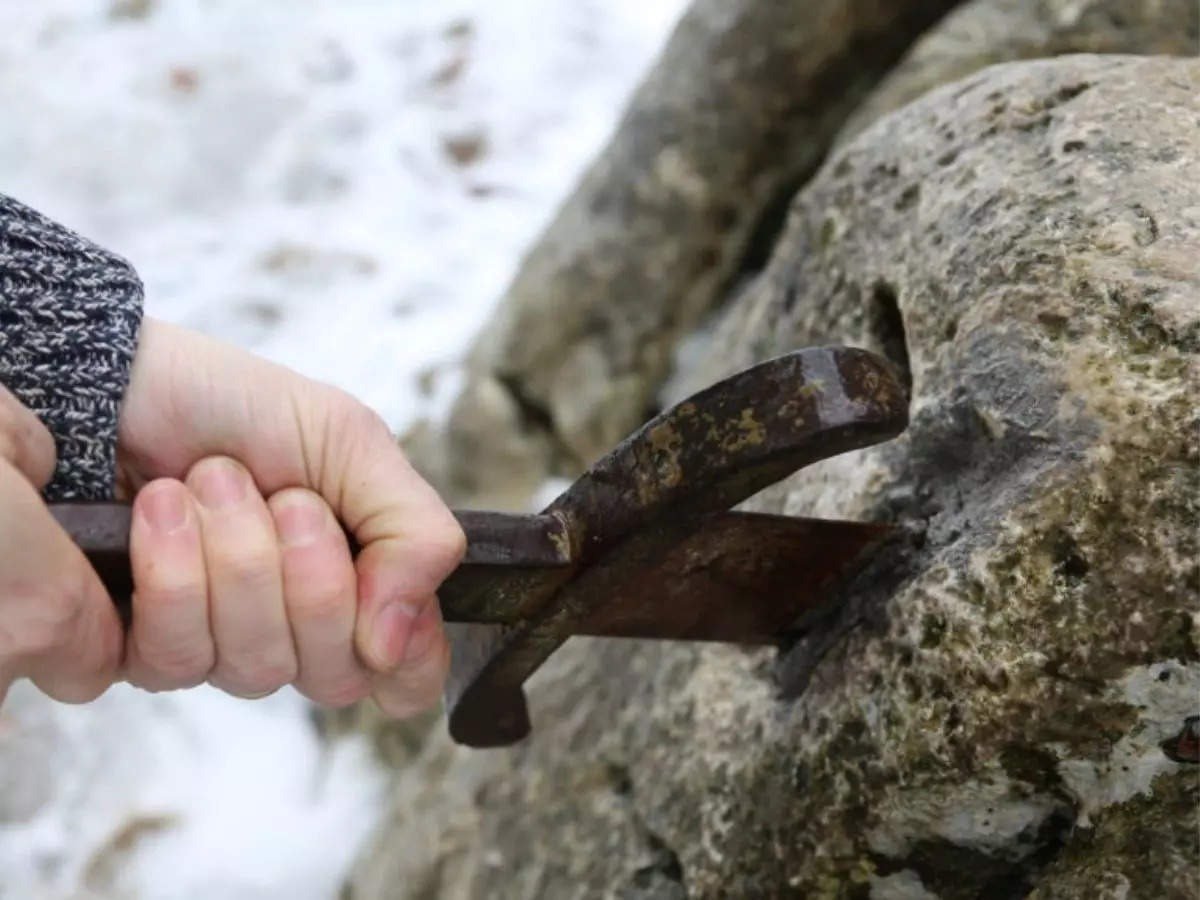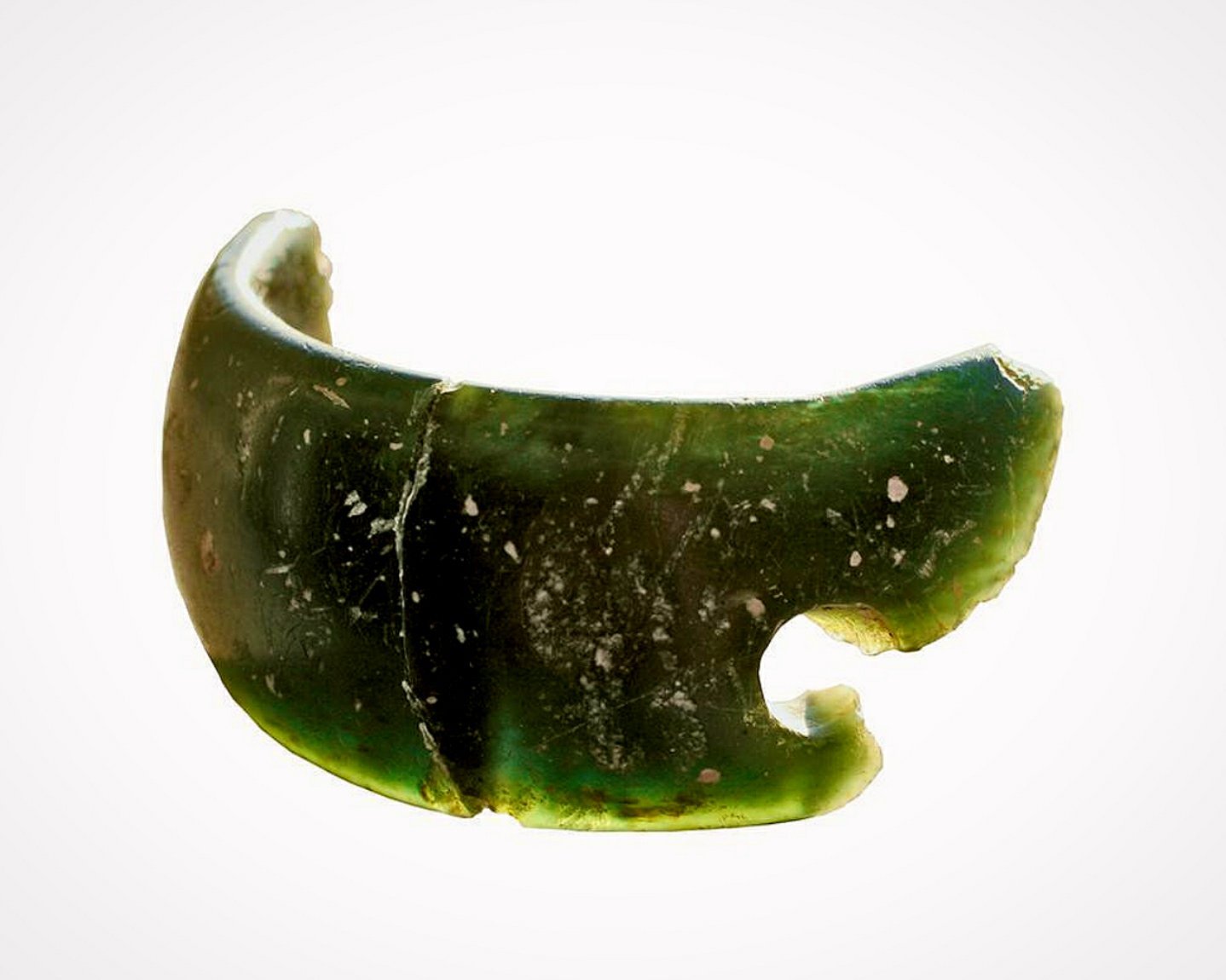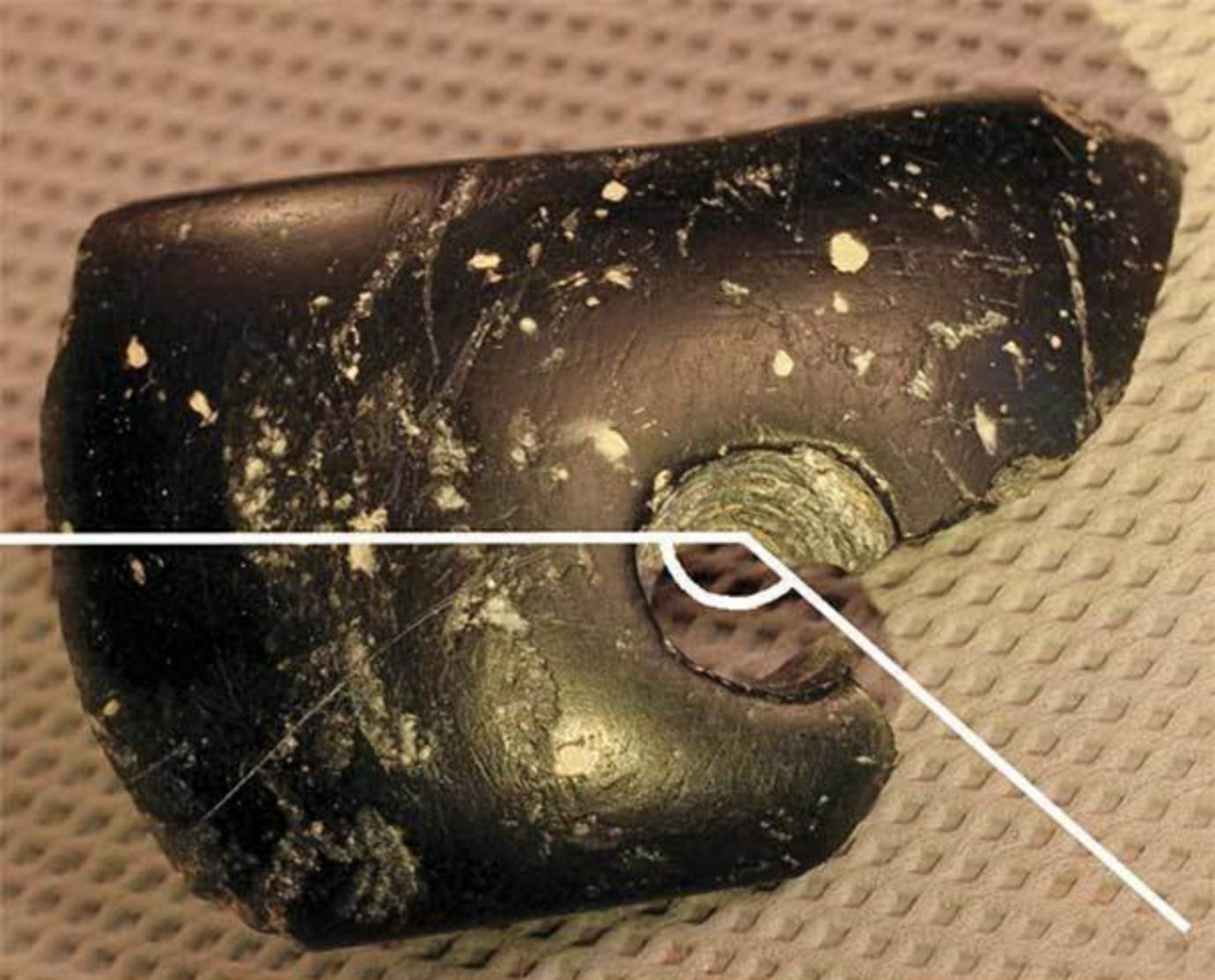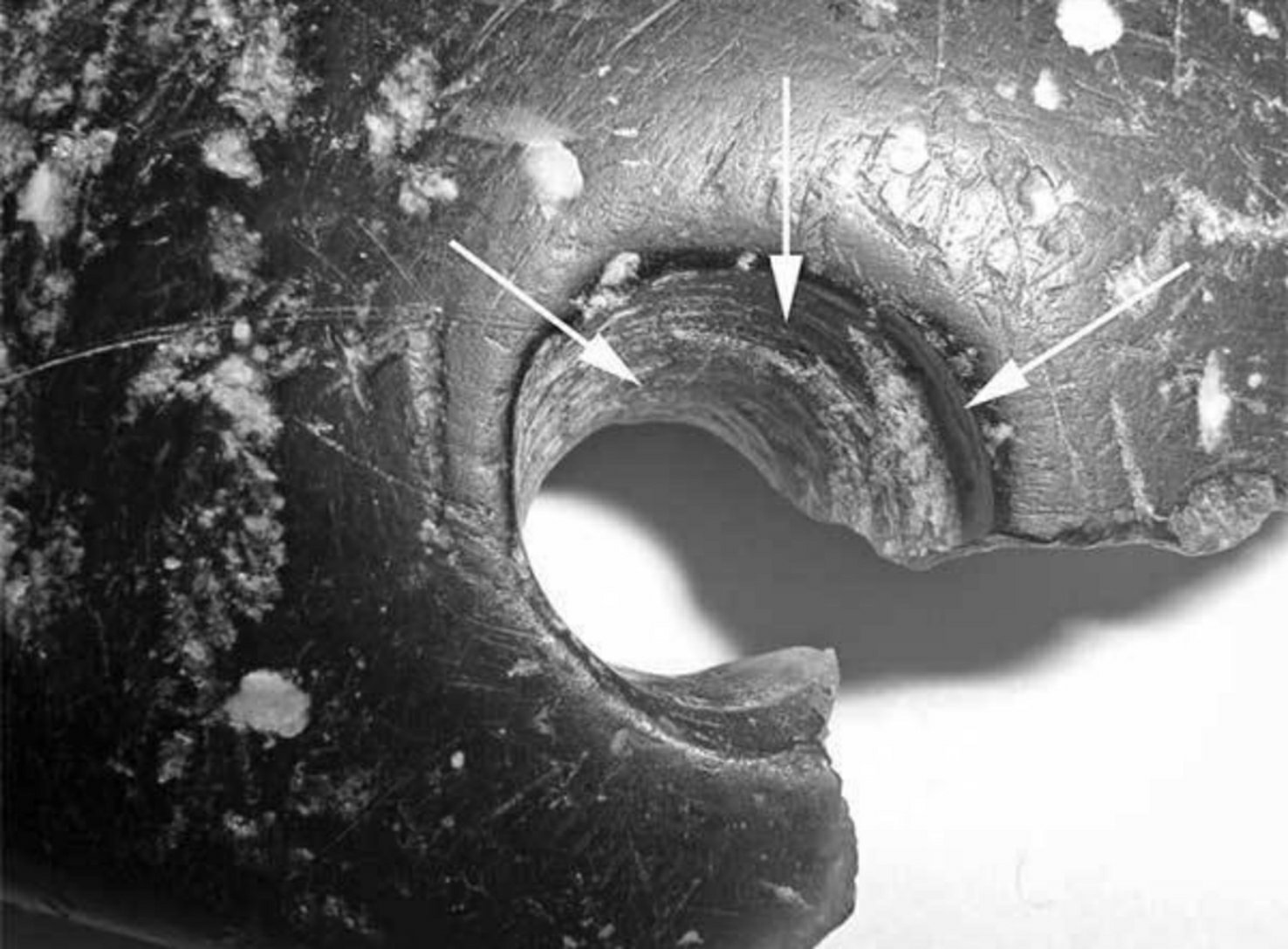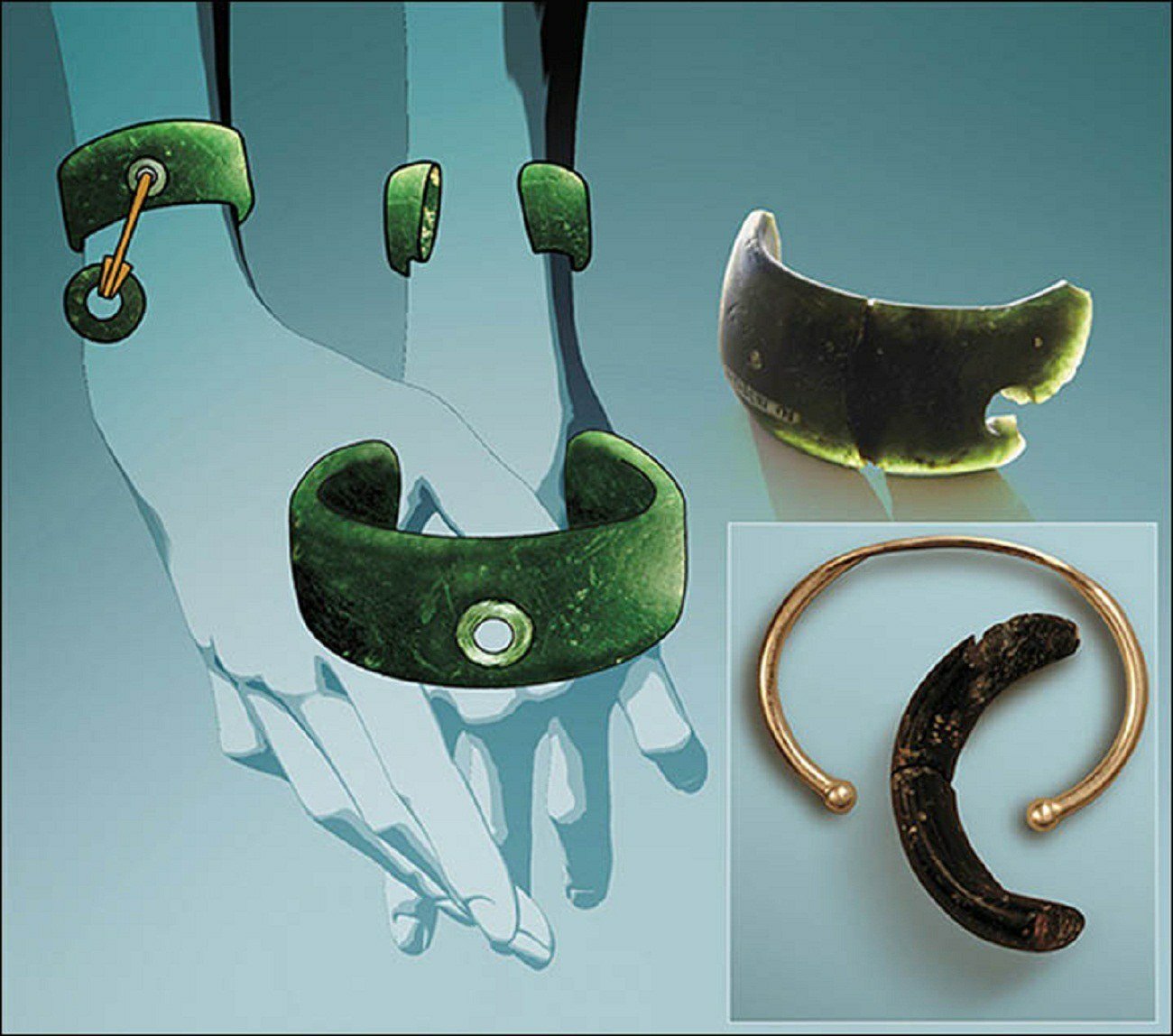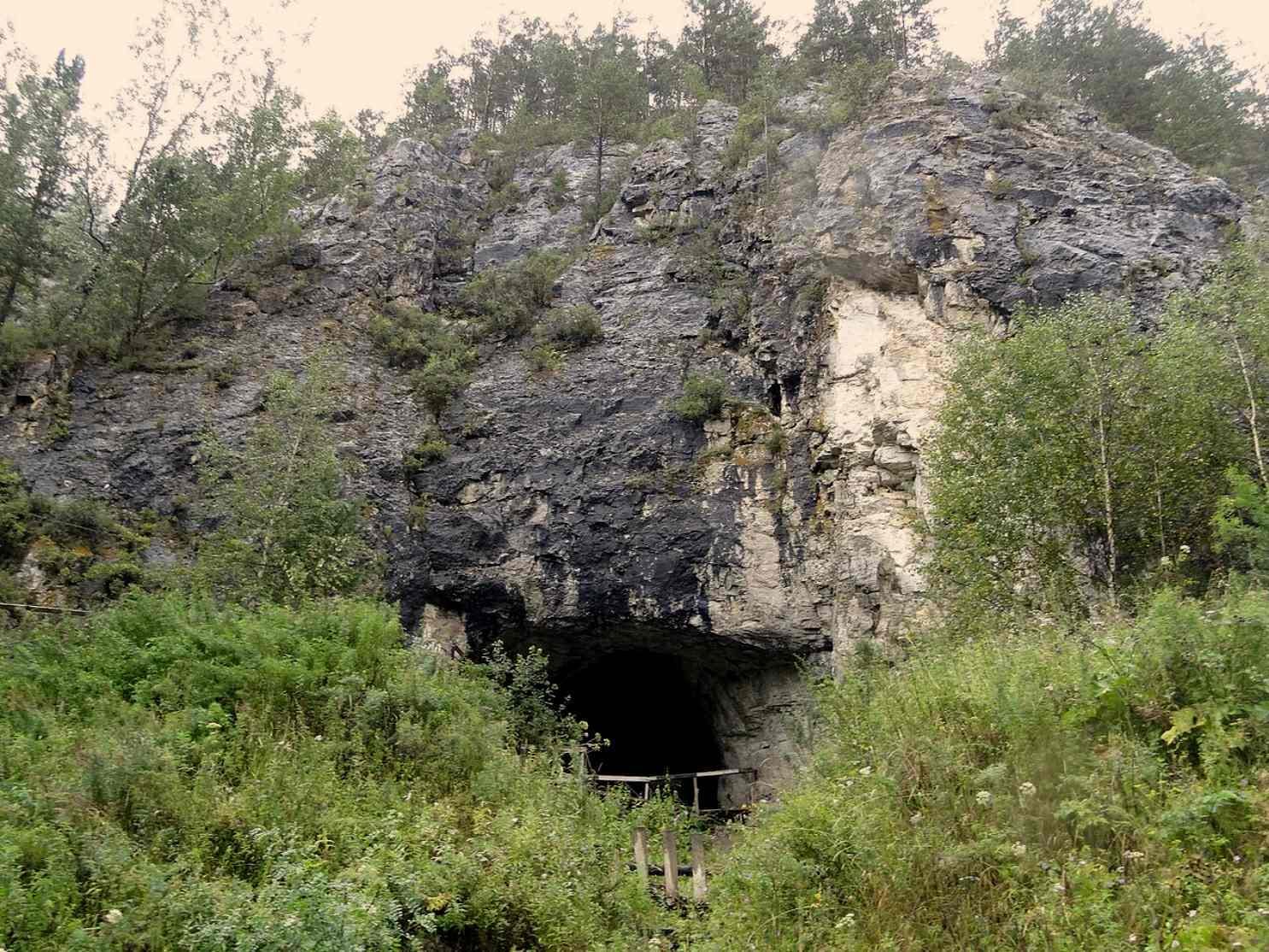'The estimated diameter of the find was 7cm.
'Near one of the cracks was a drilled hole with a diameter of about 0.8 cm.
'Studying them, scientists found out that the speed of rotation of the drill was rather high, fluctuations minimal, and that was there was applied drilling with an implement, technology that is common for more recent times.
'The ancient master was skilled in techniques previously considered not characteristic for the Palaeolithic era, such as drilling with an implement, boring tool type rasp, grinding and polishing with a leather and skins of varying degrees of tanning.
'Next to the hole on the outer surface of the bracelet can be seen clearly a limited polished zone of intensive contact with some soft organic material,' said Dr Derevyanko.
'Scientists have suggested that it was a leather strap with some charm, and this charm was rather heavy.
The location of the polished section made it possible to identify the 'top' and 'bottom' of the bracelet and to establish that it was worn on the right hand.'
Among the remains of 66 different types of mammal found in the cave were those of extinct woolly mammoths.
In 2000 a tooth from a young adult was found in the cave and in 2008, archaeologists discovered the finger bone of a juvenile Denisovan hominin, dubbed 'X woman'.
Further examination of the site found other artefacts dating as far back as 125,000 years.
Dr Shunkov has suggested that the bracelet indicates the Denisovans were more advanced than Homo sapiens and Neanderthals.
'These finds were made using technological methods, boring stone, drilling with an implement, grinding, that are traditionally considered typical for a later time, and nowhere in the world they were used so early, in the paleolithic era.
'At first, we connected the finds with a progressive form of modern human, and now it turned out that this was fundamentally wrong.
'Obviously it was Denisovans, who left these things.'

